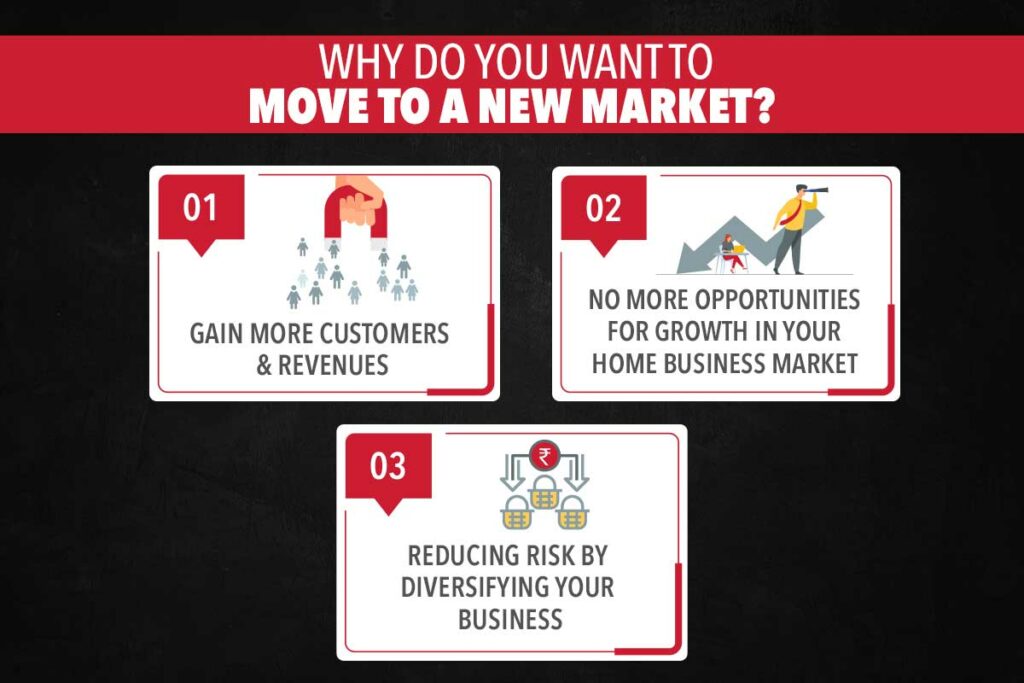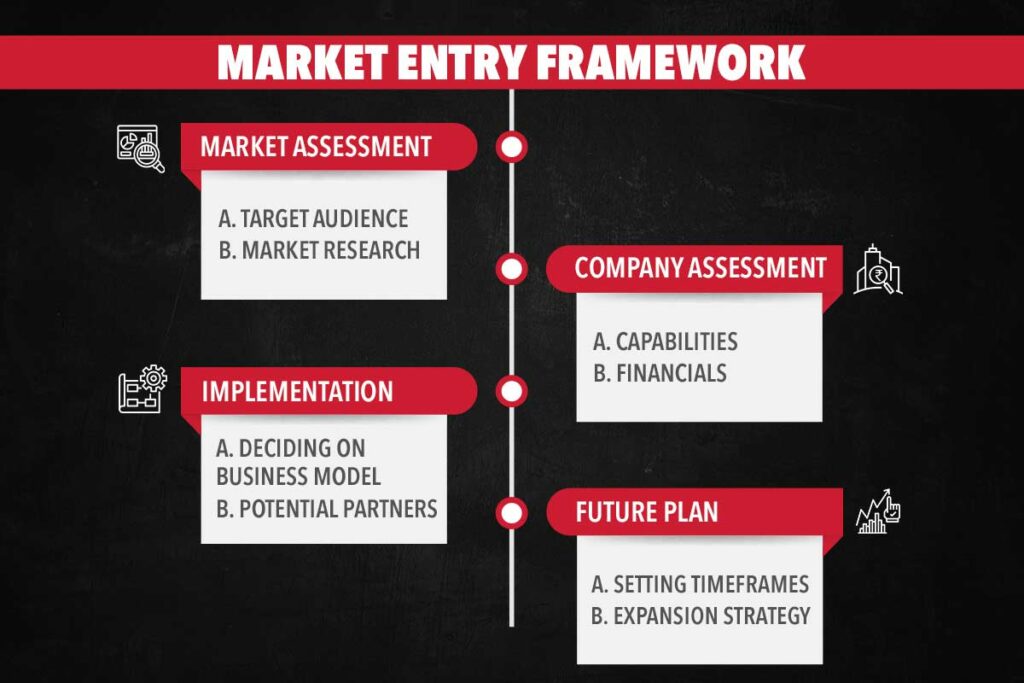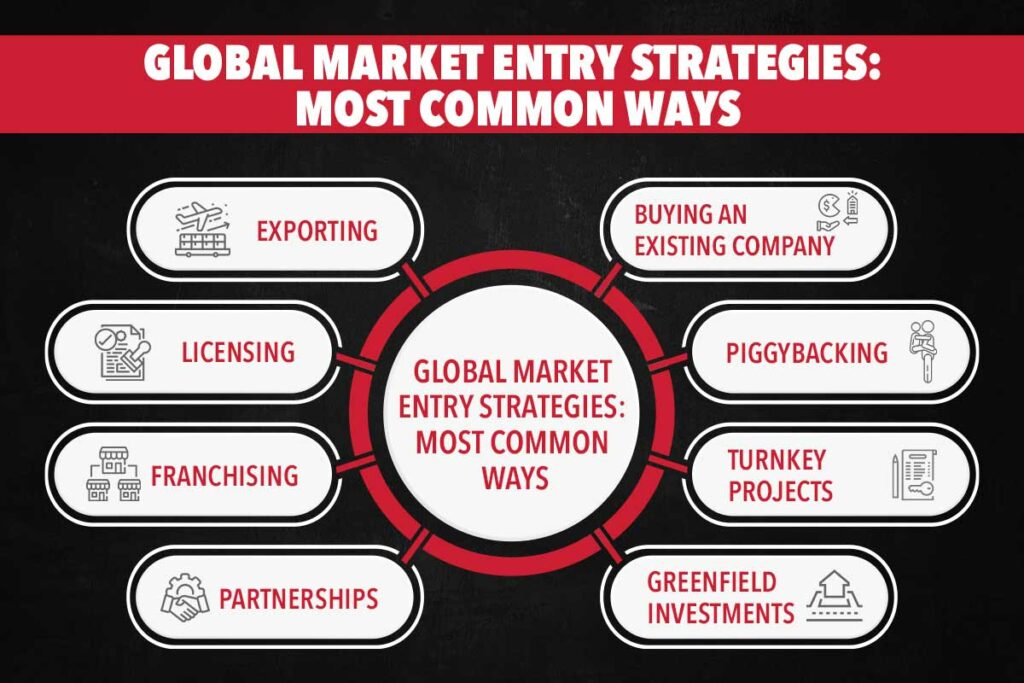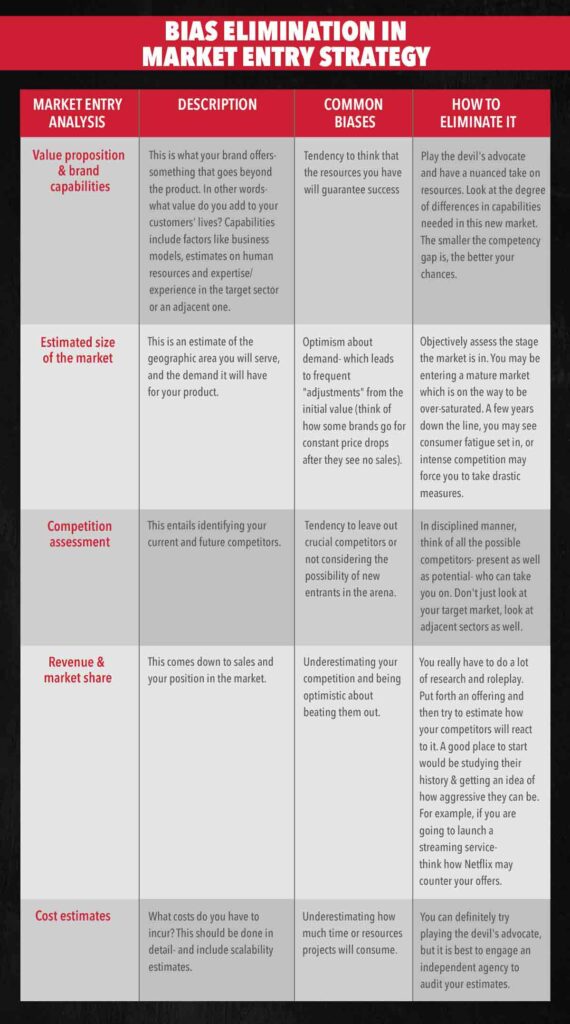Who does not dream of taking their brand and business to the world? From a start-up to MNCs- everyone wants to expand in newer markets and become a mainstay there. But if you don’t plan it right- you may end up losing money and hurting your brand. If you don’t want to be a failure statistic, you need a good market entry strategy to guide you at every step.
It always pays to have expert consultants guide you. Marketing is a significant part of operating a business, and if you are looking for a partner that you can rely on to establish yourself in a fresh market- talk to BrandLoom.
Let us look at what a market entry strategy is and how you can develop one.
What is Market Entry Strategy – Market entry strategy definition
Market entry literally means a company or organization entering a new or overseas market.
It is a planned method of delivering goods/services to a target market. Apart from importing or exporting services, it also refers to establishing and managing contracts in a foreign country.
A market entry strategy plans to maximize your chances of success when moving into a new market.
Most companies go for expanding their markets. But before you actually do that, ask yourself if you have a good reason to do it.
Why do you want to move to a new market?

1 Gain more customers & revenues
You are experimenting with your business here while exploring another market community and diverse consumers’ choices. The expansion will get you more customers, and of course, your business will create revenue by selling more and more products to more customers.
2 No more opportunities for growth in your home business market:
If things aren’t working on your home turf, you have to get out of there. Likewise, if the local market isn’t providing you opportunities in terms of revenue, then NEW markets are the only way to grow your business.
3 Reducing risk by diversifying your business
The ultimate objective is to keep your business and your employees safe. If one market is suffering for some reason, you will have a cushion to fall back on.
Of course, when you want to launch a business or expand your footprint- you will need to understand the market you will be operating in. It is foolish to enter any domain without analyzing the situation first, and without a strategy in hand. Before you start drafting your market entry strategy- here are some things that you need to consider.
What to Consider When Entering a New Market
Before entering the market, any business would consider the following factors:
- Size of the market segment and initial investment – thinking what the business might be working on
- Barriers to market entry – what roadblocks wait for them in the new areas
- Industry structure
- Competition – the potential competition and an understanding of competitive advantages
- Projected and historical growth – The estimated stats and projections on growth and the history related to an area
- Environment analysis – How does the climate might affect the business? Does the area have some environmental concerns or rules to be followed?
After you have looked at the factors above, it is time to answer the “how”.
New Business Entry Strategies: The Market Entry Framework
Once you decide to move out of your homeland, now you need to decide on your international market entry strategies. Since the target market is unknown to you- it would be best if you are well prepared and have a plan in hand.
Understand this- creating a market entry strategy is a sophisticated and crucial endeavour. If you want to do it right- you should consult with expert agencies like BrandLoom which can help you formulate a winning one.
Before you start formulating a plan, you need to understand the market and the people you will be selling to. You will also understand whether your company is prepared to take the plunge. All these factors can be assessed by the market entry framework- which is like a tool that analyzes the necessary factors.

1 Market assessment
You need to identify the market precisely. So how to identify the target market?
For this, you have to consider two things- the market and the customers.
A. Understand your target audience
This is the most crucial part of the strategy- understanding WHO will buy your product. Every business decision you take flows from your understanding of your target audience. Before you start marketing, you must have a clear idea about your consumer personas.
Here are some basic details your persona should specify:
- Gender
- Age
- Location (geography+ urban/rural)
- Income bracket
- Likes
- Dislikes
- Media consumption habits and preferences
- Problems they might have that your product will solve
- Buying behavior
Look into the customer insights, their traits, and psychological attributes. To know your target audience, it is more important to get through their methodology and mindset.
B. Do market research
After identifying your target market, the second thing would be to conduct market research. Market research consists of the following:
- Determining the current market situation
- Understanding in which stage of the life cycle is it in now- nascent, mature or declining
- Identifying and understanding competitors
- Calculating market trends
- Understanding the local laws and regulations.
- Assessing the technology situation
Now that you know the waters that you are about to dive in, it is time to assess yourself.
2 Self Company assessment
There are two important factors you need to look into to gauge how prepared your company is to enter the new market.
A. Capabilities:
You have to figure out how hard it will be for your company to win a foreign market. This means you have to look into the following factors:
- Distribution channels and supply chains
- Production or manufacturing capabilities
- Technology it needs to keep producing and distributing its products
- Human resources or manpower capabilities
Depending on your company, your product and the market you operate in you may have other capabilities that you need to look into. More importantly, you must also try to understand where you are lacking in the required capabilities and how likely are you to plug those gaps.
B. Financials:
The next crucial area is the financials. Your plan here is to look if it is a financially sound plan to enter a new market.
Ask yourself these questions:
- Are you finding the current financial situation adequate?
- Is there any financial back-up- like the possibility of attracting external investors?
- What is the approximate budget needed to enter the new market(setting up new factories, recruiting a team, etc.)?
- What will be the ongoing costs once you have entered the market(e.g., variable cost of manufacturing, advertising to build a brand, etc.)?
- Is your expectation syncing with realistic revenue projections?
- Lastly, what sort of return on investment(ROI) do you expect?
After you have gauged your capabilities objectively- comes the implementation part.
3 Implementing your market entry strategy
A. Determine the type of business model
This is an important factor to consider. If you have an established business and are trying to enter a new market- you already had a business model you follow. Consider the options of franchising or licensing carefully in such cases.
If you are a start-up and are starting a business- you will have to figure out your business model as soon as possible. Many companies take the plunge first and then decide on the business model after testing the waters. While this may work for some, new businesses may not always have the necessary financial cushion to experiment much.
B. Vet potential partners
This goes for all types of businesses, of all sizes. No business can keep operating solo forever. You will need partners- be that in marketing, production or other important fields. Keep room for that in your business strategy and have a criteria list that your partners must meet.
4 Planning for the future
There are two factors to consider here.
A. Setting a timeframe
No strategy is complete until you factor time into it. You won’t make any profits unless you start getting returns within a reasonable amount of time. So, set a timeframe that covers all important milestones. Once your targets and deadlines are set, you can plan and act with precision.
B. Possible expansion strategy
If you can establish a business in a new territory, you should consider the chances of expanding there. Think of how you want to expand- organically, with partners or via mergers and acquisitions.
Now that you are ready to make your business plan, keep in mind that you may face unforeseen issues in some vital areas. This is especially relevant for companies that are going global.
Issues faced on entering global markets
An organization willing to “go international” faces three significant issues:
- Marketing – which countries, which segments, how to manage, how to enter, with what information. Partner with a reliable marketing agency like BrandLoom to maximize your chances of success.
- Sourcing – whether to obtain products, make or buy.
- Investment and Control – Joint ventures, global partners, acquisitions
Now, let us look at the different ways for entering international markets.
Global Market Entry Strategies: Most Common Ways

1 Exporting
For exporting, you work closely with your products and resources by selling them directly into the market. Once you have established connections and launched a sales program, then you can turn to agents and distributors to further your business in that market.
You can export directly or indirectly.
1.1 Direct exporting
This is where you ship your products into a new market directly. All the parts of the process from transport to payments and operations have to be worked out separately in the new market.
This strategy requires more resources and time. You need to create an exporting infrastructure, train employees, and make and receive international payments.
On the positive side, this approach maximizes your profits as you do not require third parties. You would have complete control over your sales and marketing processes.
1.2 Indirect exporting
This involves working with an intermediary. The third party takes care of the processes, which minimizes the risk of failure. You can focus on your business and will require fewer resources.
On the other hand, profits will be lower since you have to pay the intermediary. You may be distant from your customer base as you are not dealing with them directly. There is a chance that you might miss out on crucial insights.
2 Licensing
In licensing, you transfer the rights to the use of your companies’ products or services to some other firm. It works if the purchaser of the license has a relatively large market share. Licenses can be for marketing or production.
A good example of this model is local garment makers making Superman T-shirts. DC Comics, which owns the rights to the superhero character, does not manufacture the tees. They simply give the garment factory the license to create clothes with Superman’s image on them.
3 Franchising
Franchising works well for firms with a repetitive business model. International fast-food chains follow this model- like McDonald’s and KFC.
You should consider two factors if you decide to go for the franchise model. First, this model is only suitable when your brand is very strong and when you have a proven business model. Secondly, you may be nurturing your future competition in your franchisee.
4 Partnerships
It basically means teaming up. Partnering is a useful starting point as markets differ in cultural, political and socioeconomic angles. Local partners bring local market knowledge, contacts, and customers to the table.
Joint ventures are the most common form of partnership for entering and operating in new markets. A joint venture reflects a form of partnership between a domestic and a foreign firm. Both have equal powers to invest, share ownership, and control the JV.
The Tata Starbucks joint venture is a good example of this model. All the Starbucks outlets in India are operated by this entity.
5 Buying an existing company
If your brand is very strong and your finances are good- you can simply take over an existing firm in your target market. This is usually the preferred model for behemoth MNCs. Disney’s takeover of UTV is a good example of this.
Buying a local firm has many advantages. Firstly, the company is already established and commands a respectable market share. Secondly, by taking over a potential competitor, you are solidifying your presence.
6 Piggybacking
This is a unique way of entering an international business. In this model, companies that are not in the same space can team up and promote each other. Let us illustrate piggybacking with an example.
Suppose your company manufactures seat belts, and you sell them to a big car company. When the car company goes international- by default, your products will find an international market. This means that you piggybacked on your partner to enter a new market.
7 Turnkey Projects
Turnkey projects are projects which can start operating if you just “turn the key”. This is a common market entry option for firms that provide sophisticated and specialized services such as environmental consulting, architecture, construction, and engineering.
These agencies start the project from scratch and on completion, hand it over to the client. This is an efficient way of entering the foreign markets as the client is normally a government or some other big concern in a field of public service.
8 Greenfield investments
This requires your direct involvement in international business. Greenfield investments are where you buy the land, build the facility, and infrastructure and operate the business regularly in a foreign market. It requires a lot of investment and holds the highest risk.
But some target markets may require you to undertake the cost and risk due to government regulations, trade restrictions, transportation costs, skilled labour, and the ability to access technology.
Bias Elimination in Market Entry Strategy
It is important to remove bias when gauging your company’s readiness or the market situation if you want to have a good market entry strategy. Here is a guide from McKinsey about objectively gauging crucial offerings.

Factor 1: Value proposition & brand capabilities
This is what your brand offers- something that goes beyond the product. In other words- what value do you add to your customers’ lives?
Capabilities include factors like business models, estimates on human resources and expertise/experience in the target sector or an adjacent one.
Bias: Tendency to think that the resources you have will guarantee success
How to eliminate it: Play the devil’s advocate and have a nuanced take on resources. Look at the degree of differences in capabilities needed in this new market. The smaller the competency gap is, the better your chances.
Factor 2: Estimated size of the market
This is an estimate of the geographic area you will serve, and the demand it will have for your product.
Bias: Optimism about demand- which leads to frequent “adjustments” from the initial value (think of how some brands go for constant price drops after they see no sales).
How to eliminate it: Objectively assess the stage the market is in. You may be entering a mature market which is on the way to being over-saturated. A few years down the line, you may see consumer fatigue set in, or intense competition may force you to take drastic measures.
Factor 3: Competition assessment
This entails identifying your current and future competitors.
Bias: Tendency to leave out crucial competitors or not consider the possibility of new entrants in the arena.
How to eliminate it: In a disciplined manner, think of all the possible competitors- present as well as potential- who can take you on. Don’t just look at your target market, look at adjacent sectors as well.
Factor 4: Revenue & market share
This comes down to sales and your position in the market.
Bias: Underestimating your competition and being optimistic about beating them out.
How to eliminate it: You really have to do a lot of research and roleplay. Put forth an offering and then try to estimate how your competitors will react to it. A good place to start would be studying their history and getting an idea of how aggressive they can be.
For example, if you are going to launch a streaming service- think about how Netflix may counter your offers.
Factor 5: Cost estimates
What costs do you have to incur? This should be done in detail- and include scalability estimates.
Bias: Underestimating how much time or resources projects will consume.
How to eliminate it: You can definitely try playing the devil’s advocate, but it is best to engage an independent agency to audit your estimates.
Successful Market Entry Strategy examples
Walmart
Walmart has a model that pays off well. It seeks local farms near its warehouses for its food section. While the retailing giant can save on transport costs and restock fast, local farmers can sell their produce to Walmart and earn profits. This is a win-win situation for both.
Starbucks in China
When Starbucks declared its intentions for China, many scoffed about its prospects. Negative speculation was rife that a nation of tea-drinkers will not warm up to coffee. Today, China is Starbucks’ biggest market after the USA, with over 3500 outlets.
Starbucks did not just sell coffee, it sold the experience that its brand stands for. It was a hit with China’s upwardly mobile classes and continues to score profits.
Examples of Failure of Market Entry Strategy
Uber in China
The US-based cab-hailing company entered China with a lot of fanfare and left no stone unturned to lure in customers. The company gave US$40-50 million EVERY WEEK in bonuses and free rides after its launch in China.
After two years, in 2016, Uber fled China. It lost more than a billion dollars every year while in China. The reason for this is that Uber massively underestimated China’s own ride-hailing company Didi Chuxing.
McDonald’s in Jamaica
Ronald McDonald quit Jamaica in 2005 after a decade of trying to get a foothold in the market. The reason for that is it could not compete against other fast food brands like KFC and Burger King, who had already established themselves by the time the company came to Jamaica.
On top of that, McDonald’s burgers were found lacking by the customers- who expected bigger ones. Not being able to appeal to its target audience, the fast-food giant wrote off its losses and left.
Conclusion:
Entering a new market is akin to going on an adventure. So, plan wisely and be prepared for surprises. Partnering with the right people and market experts with a proven track records will increase your chances of being successful. If you are looking for the right marketing or branding partner, BrandLoom is there. Give us a call and we can brainstorm together.
Frequently Asked Questions(FAQs):
What are the factors that determine market entry strategy?
There are many factors that determine your chances of success. Among them are:
Market Size
Maturity of the market
Government Regulations
Level of Competition
Available Infrastructure
Level of Risk
Production and Shipping Costs
Quality talent
Technology
Marketing
If you want an unbiased marketing strategy for your business that helps you grow organically- talk to our team at BrandLoom.Why selecting a market entry strategy is crucial?
Market entry strategy often determines your chances of success in a foreign market. In some markets, licensing may work for you. In others, exporting may be the way to go about it. To succeed, you must choose the right business model and the right strategy.
Remember, many countries have restrictions in place about how foreign players can operate on their soil. You may have to incur extra costs or delay your milestones by operating in such markets.How do you develop a new market strategy?
To develop a new market entry strategy, you should look at the following four factors:
A. Assessing the market and identifying your target audience
B. Assessing your capabilities and financials
C. Determining the right way of doing business and vetting partners
D. Allotting timeframes and planning for the future
The only way to do this correctly is to remove egocentric biases and go for an objective approach. If you need a good business consultant to help you with the task, BrandLoom is here.








Developing a market entry strategy is a critical process for any business looking to expand its reach. The most important steps in this endeavor involve thorough market research, understanding local regulations and culture, identifying key competitors, and crafting a tailored plan that aligns with the company’s goals and resources. Successful market entry hinges on these foundational steps, ensuring a well-informed and strategic approach that maximizes opportunities while minimizing risks.